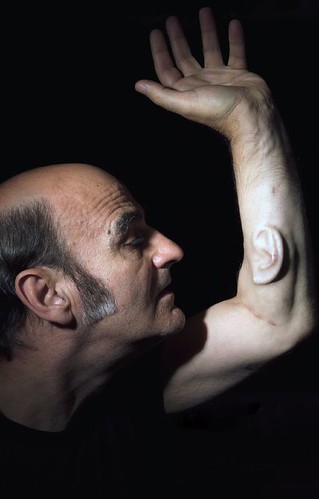Introducing Yuka Yamaguchi

Yuka Yamaguchi
I found this image[1] by Japanese artist Yuka Yamaguchi yesterday. Artwork which features innards of bodies are a personal favourite, I first realized this after discovering Ferdinand Springer‘s Ecorché I[2] some years ago.
I can’t tell off hand who else belongs in this category from an artistic point of view, but from a utilitarian point of view there is the anatomical art by the lickes of Vesalius, Jacques Gautier d’Agoty[3] and John Bell[4]. Perhaps my first exposure to the subversion of inside and outside was David Cronenberg‘s Videodrome in which a videotape and a pistol are inserted in the belly of James Woods.
[Youtube=http://www.youtube.com/watch?v=Ytp69fBh0J8&]
Videodrome (belly insertion scene at 2:54)
More of her art can be found by clicking this[6] Google gallery. She also has presences on Youtube[7] and Flickr[8], as well as a blog[9].
She is a woman with excellent and adventurous tastes. From her Flickr profile:
Favorite Books & Authors: Mishima, Osamu Dazai, Mitsuo, Cyu-ya, Oliver Sacks, Murakami Haruki, Saki, Yourou Takeshi, Tsurumi Shunsuke, Kindaichi Haruhiko, Malcom Gladwell, Jan Wong,
Favorite Movies, Stars & Directors: Ozu, Kurosawa, Yamada Yoji, Wong Kar Wai, Jean-Pierre Jeunet and Marc Caro, Coen Brothers, Wes Anderson, Michel Gondry
Favorite Music & Artists: Aeroplane, Superpitcher, Junior Boys, Jacques lu Cont, DFA, France Gall, Daniel Wang, Kelley Polar, Loo & Placido, Alpha, Satie, Kahimi Karie, Tom Waits, Stereolab, Yuzo, Fujiyama Ichiro
Most of the comments on Yamaguchi’s work focus on the fact that she transcends the “weird for weird’s sake” aesthetic found in many of her contemporaries (think many of the lowbrow Americans presented by Wurzeltod). Her work is an uncanny mix of cruelty and innocence, benign in spite of its undercurrent of disturbance.
Her closest percursor is probably Roland Topor.













